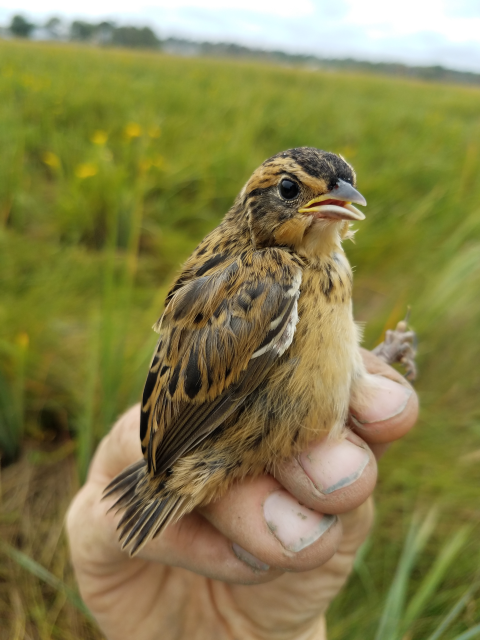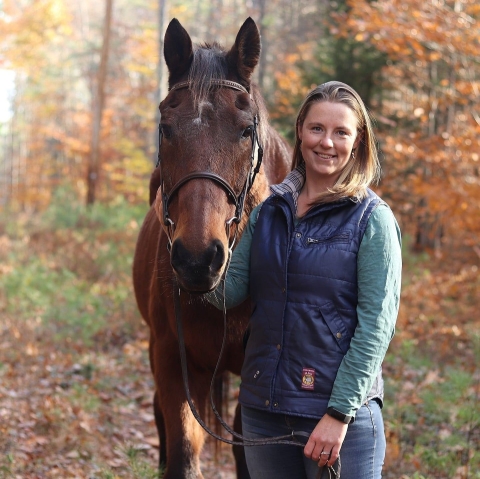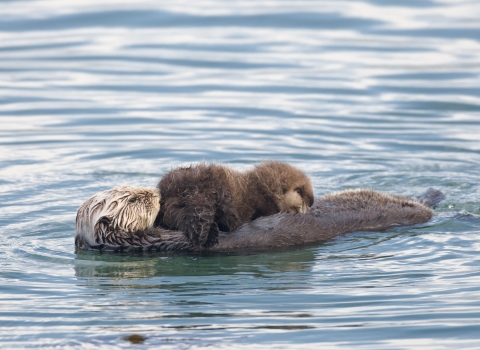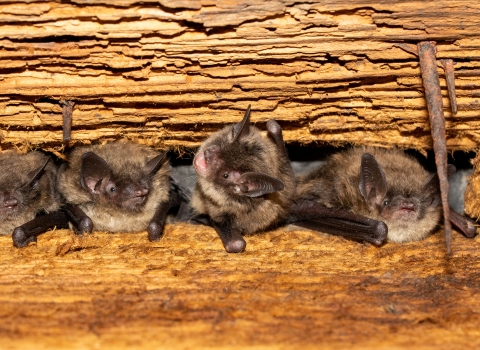“What if I had never seen this before? What if I knew I would never see it again?”. Rachel Carson
Each stroke of the paddle makes a small ripple in the hues of blue reflecting off the still water. I watch as my niece glides slowly to a stop in her kayak. Looking back, she mouths “a heron”, smile beaming across her face. A minute later the large bird takes flight, soaring over our heads. She lifts her head back and watches in wonder as its impressive wingspan lifts it higher into the sky. The silence is broken with excited chatter of “how cool”, and “how big it was”. I smiled and nodded along. To be honest, this was probably the 30th Great Blue Heron I had seen this week. As a biologist at Rachel Carson National Wildlife Refuge I have the privilege of having intimate experiences with our natural world daily, and now this Great Blue Heron seemed a bit mundane. Had I lost my sense of wonder?
At the refuge, my primary task is monitoring the Saltmarsh Sparrow – a small, brown bird that is intricately tied to the narrow band of salt marsh salt marsh
Salt marshes are found in tidal areas near the coast, where freshwater mixes with saltwater.
Learn more about salt marsh along the Atlantic coastline. It is estimated that four out of every five Saltmarsh Sparrows may have already disappeared from the landscape. They nest in the marsh grasses mere inches of the ground, and although they are adapted to tidal flooding, they are not adapted to high tides from rising seas and storms. As sea levels rise, their nests flood, and the species inches closer to extinction. I spend my summers walking through the tall grasses of the salt marsh, listening for their whisper-like calls and watching for the quick flight of a female as she scurries from her hidden nest. By monitoring their nesting, we are learning what makes a nest successful so we can guide our conservation and restoration efforts.
As scientists, we are taught to be objective. Keep emotions at bay and look at the facts. But I know many of the Saltmarsh Sparrows that nest in the Refuge’s marshes, I’ve been watching them for seven years. I know that female #1601-69613 nests by a little pool, tucked into the Spartina, and has done so for the past three years. I know that #2781-82355 and #2781-82354 are sisters, born in August 2019, and nested just meters from one another in 2020. I’ve known many of these birds since they were an egg. I watched as they hatched and in just 9 short days were strong enough to leave their nest. But I’ve also bore witness to eggs washed out of nests, wet and cold. I’ve time and time again, checked nests that a few days earlier had squeaking young chicks, to find them dead – drowned in the safety of their nest, too weak to climb or water to deep to escape by climbing on the tops of the grasses – chicks, that just days earlier I held in my hands and banded.
As I entered the marsh on a humid July morning, I noted that I was walking in water where it was usually dry. An overnight storm combined with high-spring tides didn’t bode well for the nests I was about the check. Bracing myself, I crouched down and saw that four eggs still remained in a slightly damp nest. They survived. Just then, an egg moved. Splitting the top and bottom of the shell, a rambunctious little pink chick emerged. I welcomed it to the world, and quietly walked away. It was in this moment that my sense of wonder returned, and I pledged to keep hope alive in the marsh.
It is easy to be swept away in a sea of emotion. After all, a species can’t be saved by an individual. It takes strong partnerships, dedication, and time for a conservation success story. To disconnect emotionally from this research may be necessary for the sake of science and mental health, but isn’t it emotion that drives our passion for conservation? There will always be a human dimension to wildlife conservation and while I know majority of people will never see a Saltmarsh Sparrow, I hope they find comfort in knowing they exist.
Rachel Carson said it best, “What if I had never seen this before? What if I knew I would never see it again?”.
Bri Benvenuti joined the staff at Rachel Carson National Wildlife as a biological technician in 2016. Her day-to-day activities are a combination of research, restoration, and management of at-risk species with a sprinkling of outreach and education. Born in Pennsylvania, Bri grew up in the shadow of Hawk Mountain Sanctuary where a love of the outdoors was instilled by her parents before moving to Maine. Bri’s hobbies stem from her love of the natural world. When not spending time with her equine partner, Marshall, she enjoys using photography to tell the story of conservation and nature.







